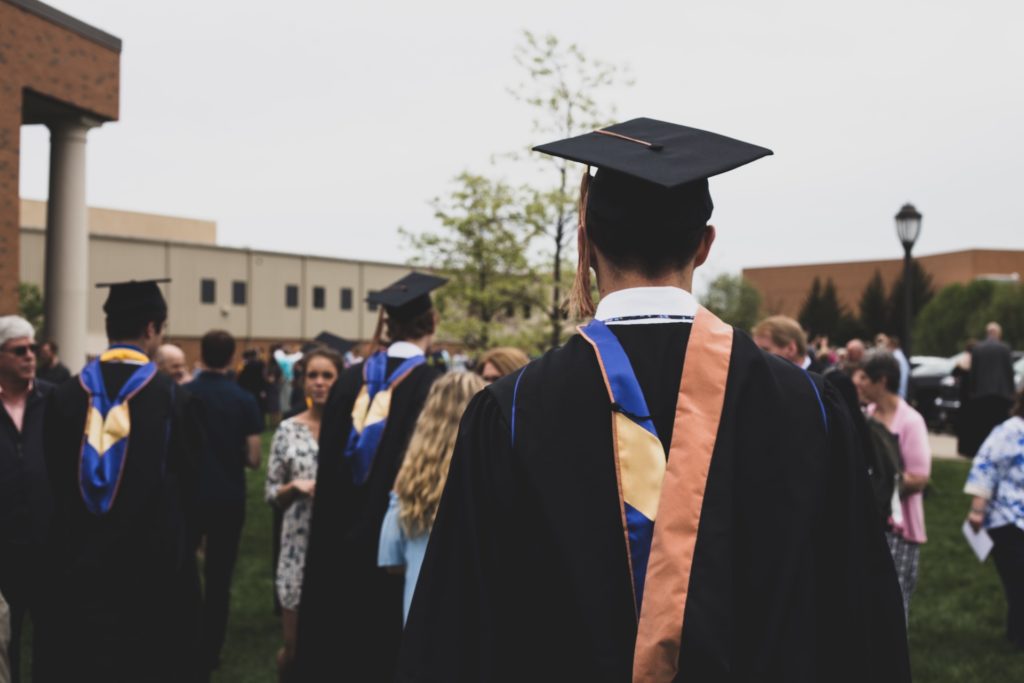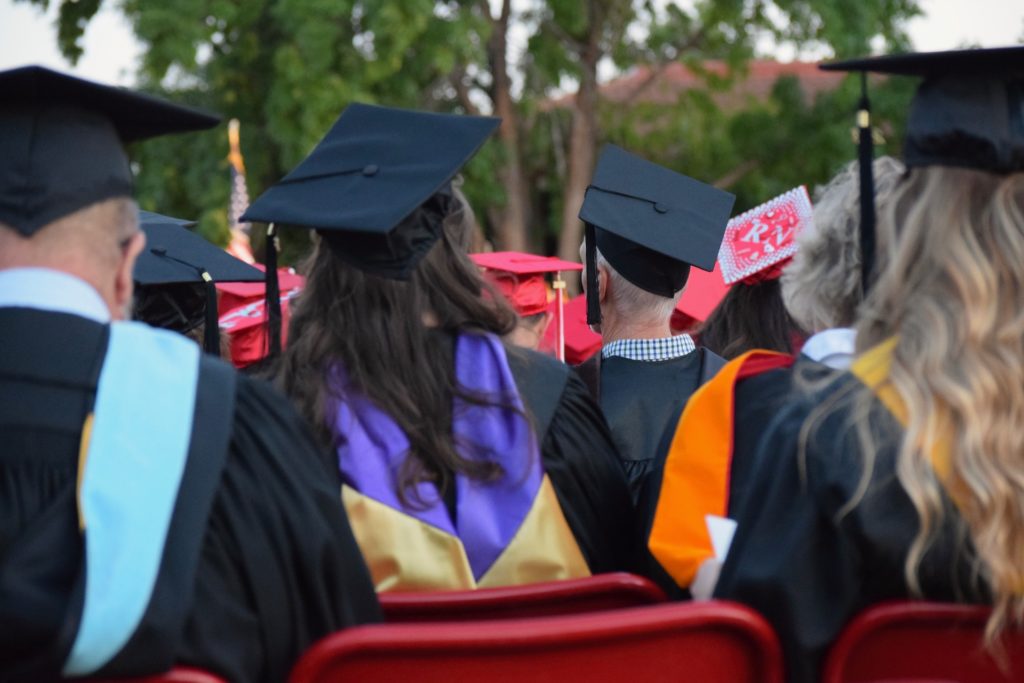3 Critical Skills Every College Student Needs to Change the World
Globalization. Diversity. The future of work. The fate of our democracy. For years these topics have dominated national conversations not just in the professional and political worlds, but also on college campuses where teachers and administrators are—or should be—thinking hard about how well we’re equipping the next generations of students for the world they’re about to enter.
At the top of most lists of desired competencies for college students are such things as critical thinking, written and oral communication, understanding of the world’s languages and cultures, and, more recently, given the rise of big data, the ability to quantify, compute, and analyze data.
But there’s another cluster of skills that rarely gets mentioned. These are the abilities students must develop if they are to help heal our broken society. The skills they must have if they are to productively engage as citizens in a nation of millions who are feeling disenfranchised, disengaged, and frankly desperate about the future of our country.
What do today’s college students need to know and be able to do in order to help repair the political and social morass we now live in? Here’s my list of the top three competencies every college student needs to have now more than ever.
-
Creativity
Creativity is the ability to transcend the usual rules and paradigms and view problems in entirely new ways. The ability to develop new ideas, interpretations, imagine different ways of being and doing and interacting in the world.
“No problem can be solved from the same level of consciousness that created it,” Einstein famously said.
Do we honestly believe, then, that we’ll create a better society by graduating a generation of students who apply the very same technocratic, hierarchical, individualistic, competitive mindset that many of today’s leaders were indoctrinated in a generation ago?
And yet, if you walk into most college lecture halls, you rarely observe fires being kindled or new ideas being generated. What you see instead is a herd-like submission to the same status quo that defined the college classroom of a generation and two ago: a professor standing at a podium, overlooking a sea of passive students quietly jotting down what they will need to regurgitate later for a test.
How to Teach Creativity
In my course, Books Behind Bars, I structure the class in a way that students have no choice but to be innovative. I give my University of Virginia students lots of autonomy to come up with their own ways of facilitating the discussions they have with small groups of incarcerated youth.
Instead of providing them with a curriculum to follow or list of questions to ask, I invite the UVa students and their partners come up with these on their own. I give the opportunity to resolve the many other real-world problems they will face: relationship-building challenges, communication challenges, group management challenges, and a host of other difficulties arising from working inside a prison environment.
Though I’ve taught the class for a decade now, never have my students or I been as motivated and invested in a class; rarely have the same creative fires been lit or ingenuity unleashed in my classroom as they were on the maiden voyage of Books Behind Bars.
To teach students creativity, view the classroom not as a space where a professor reports on old discoveries but as a place where new insights are co-created in real-time by students and instructors alike. Envision a class as a journey without a clear destination. An experiment without predetermined outcomes. Empower your students to become active participants in the process. Only then will students develop the habits of creativity essential to reaching the level of consciousness required to solve today’s most intractable problems.
-
Empathy
The Oxford dictionary defines empathy as “the ability to understand and share the feelings of another.” Without this ability, one fails to connect in meaningful ways not only with others but with oneself. What if more people were able to hear another’s position, give it its due, and even understand the social, cultural, and personal circumstances that led the person to it? How might we engage differently in discussion and debate?
Empathy allows us to appreciate the humanity of every person and the humility to recognize another’s pain as equal to our own. So often we fall into the default mode of harried egoism so familiar to us—like honking our horn at the slow drive in front of us, ignoring the outstretched hand of the homeless man, or self-righteously refusing to mend relations with a relative who has “wronged” us—and it results in a diminished capacity to feel gratitude, connectedness, and love.
Cultivating empathy, then, is not just the right thing to do, it’s the practical thing to do. It’s well-known by forward-thinking companies that cultivating a corporate culture of empathy leads to accelerated productivity and innovation, deeper engagement and collaboration, and even greater market value.
All that being said, it is rare to hear college professors name empathy as a learning objective for students in their classes. This has to do in part with the touchy-feely connotation of the word “empathy” in an academic environment that privileges mind over heart, ironclad reason over messy emotion.
But empathy is, in fact, both a critical and teachable objective for any educator.
How to Teach Empathy
The young men and women my generally privileged university students work within the Books Behind Bars program have backgrounds that include psychological illness, anti-social, or criminal behavior. Through deep conversations about literature, my students move beyond the labels and stereotypes they unconsciously brought to their interactions and begin to see the adolescent offenders as real people, as complex, multi-faceted human beings with hopes and dreams, joys and sorrows, noble and negative traits, just like the rest of us.
This discovery, in turn, has a significant impact on how students begin to think about their roles as future defense attorneys, or doctors, or businesswomen, leading many to rethink their career plans. One young man who was planning on becoming a corporate lawyer realized that he wanted to put his legal skills to use as an advocate for at-risk youth. A young woman, an aspiring judge, realized that, thanks to her experience in Books Behind Bars, she’d never again be able to turn away from the humanity of the accused or ignore the array of circumstances that may have led them to their life of crime.
If tens of thousands of college students a generation ago had made similarly empathic discoveries, how different our institutional cultures and society as a whole might now look. It’s not too late. If the students of today learn empathy before they graduate college, they will make choices that will lead to a more vibrant, loving society.
-
Resilience
Even before they get to college, students are bombarded by glossy marketing materials containing faces of happy, smiling students, as well as pictures of illustrious former graduates. These, of course, are the faces of success.
But where are the sad faces, the frustrated faces, the angry faces, the determined faces—the faces of students who are learning deep, hard, and important lessons about life?
In their zeal to sell a message of success, and then to teach it when students arrive on campus, our colleges and universities are shirking their responsibility to teach students an equally if not more important lesson: how to fail and learn from the experience.
How to Teach Resiliency
I had a student in Books Behind Bars a few years back—we’ll call her Jennifer. Like most UVa students, Jennifer came to UVa with an unbroken track record of academic as well as extracurricular successes. A highly intelligent, passionate, socially conscious young woman who’d participated in national reconciliation efforts in post-genocide Rwanda and spent time studying social conflict in Jerusalem, Jennifer was seeking a class that would feed her passion for social justice.
Her one slight apprehension, she admitted, was that the Beaumont Juvenile Correctional Center residents might reject her attempts to connect with them.
But if she was able to build bonds of mutual understanding with perpetrators of genocide in Rwanda and Arab youth supporters of the Intifada in Israel, then surely she could find common ground with the young incarcerated men at Beaumont, right?
Or so she thought. As did I. It turns out we were both wrong.
Jennifer’s experience in Books Behind Bars—and her capacity to reflect deeply on it and learn from it—was an instructional goldmine. And not just for her, either. For me, as well, and for all of us, really, who care deeply about education and who believe in the power of classrooms to affect personal and social change.
What Jennifer discovered in the course, and I relearned vicariously through her, is what leaders from all walks of life often cite—and a growing body of research corroborates—as one of the most important lessons any successful leader can learn: the value of resilience.
Often defined as the capacity to bounce back, to adapt and persevere in the face of adversity, resilience is also, I would add based on my experience with Books Behind Bars, the courage to hold on to one’s ideals even after one has seen reality for what it is.
It’s one thing to enter wide-eyed into a class like Books Behind Bars and find your high hopes met by smiles, poignant moments of connection and gestures of appreciation, or, in the absence of these things, at least to find out in the end that the residents you worked with actually did get something out of the experience.
But it’s another matter altogether when, as Jennifer discovered, your every sincere effort and intention are met with dismissal and hostility, when you realize that the young men you cared about and on whose behalf you worked so hard could seem to care less about your presence. What does one do then? Put up a steely armor self-protective cynicism? Persist in one’s quixotic insistence that the world is the way you’d like it to be, rather than the way it is? Just give up?
Each of these tried and true paths offer a tempting escape from the hard business of living and leading. But they weren’t Jennifer’s answer. Her answer–the right one, in my opinion—was to deeply feel the frustration that comes with trying and initially failing, to affect positive change in the world, and then recommitting to doing just that.
No lesson, it seems to me, could be more valuable for a college student in our troubled times.
***
Thanks so much for dropping by and reading what I have to share today. I appreciate your interest. If you think any of your friends would be interested in today’s blog post, use the share buttons below to share with them. If you enjoyed today’s blog post, click here to join my group of readers. I send out monthly newsletters and would never spam you….



This was such a good read. I couldn’t agree with your list more, especially when it comes to resiliency.
Thanks for the comment. This is actually an abbreviated list. There are two more items I would add, and will probably do so in a longer, revised version of this blog: communication and entrepreneurial ingenuity. But I still think creativity, empathy, and resilience would be my top three.
Thank you, Lydia. Yes, more and more of us are recognizing that THESE are the real skills that are going to make all the difference in students’ future lives, and in the life of the planet. We need to start putting them front and center of the educational agenda.
Thanks for the thought-provoking piece. Really got me thinking about how I’m teaching my students.
Thank you, Ellen. Yes, I’ve been thinking about and experimenting with these for years. It’s only recently that I’ve come to realize what I think it takes for a teacher to teach students to be agents of positive change in the world.
Agreed. Well done. In fact, I have been “teaching to/for” creativity, empathy, and resilience for years, which students intuitively feel and appreciate. But there’s a snag – it effects the way I assign grades. I’m consciously attuned to students’ gains and transformations in these three (not traditionally measurable) areas, and it can sway a borderline final grade in one direction or the other. The problem is, obviously, that I haven’t articulated this clearly — even to myself — much less put something on the syllabus that says “the work you perform in this class will be graded in part by the degree to which it reveals a growing capacity for creativity, empathy, and resilience.” Guidance, please? I must admit my resilience breaks down in the face of student (and institutional) anxiety about grades.
Yvonne, this is a tough one. My first, more radical impulse would be to tell you to find a school whose educational philosophy more closely mirrors your own. But I know that’s easier said than does. Regarding grades, it’s difficult to measure growth in these areas, but it is possible, and there are instruments online that you can use to do so. These tend to be more for research purposes than teaching, but if you dig around you’ll likely find some for teaching, as well. Also, I’m assuming your school has expectations of others areas of growth, too? Maybe you could measure the more easily measurable skills using tried-and-true methods and leaving these “human skills” goals to a separate category unto itself–letting students know that they will grow in these areas but will not be “graded” as such on them. In fact, “grading” students on their increase in empathy and creativity can be counter-productive. The fear of grades themselves destroys the very possibility of growth in these areas in particular. So I’d try, if possible, to keep grades out of this equation. Practical advice: Do you have allies at your institution with whom you can strategize about these issues? There are many, many teachers in your shoes. You are not alone. Others have trodden this path before, and some may have some good advice about how to satisfy the administrative requirements of giving grades while also satisfying the teacher’s need to watch students grow in ways that will make a big difference in their lives and in the world at large. Finally: Keep the faith. The winds are shifting. There’s a lot more attention being paid to the importance of these skills in K-college education. Your anxiety might not be as necessary as you think. Keep me posted on your journey.
Andrew, glad to see you are continuing to spread your approach to teaching. You embody all the aspects you describe here. Carolyn McGrath
Thanks Carolyn.
[…] We should also teach students that getting to the right answer may help you pass a test, but doing the right thing will help you live a life of integrity and […]
[…] better, and we should be having this conversation in all fields. We want our students to have the critical thinking skills necessary to adapt to whatever problems arise down the road — and the creativity to come up with […]